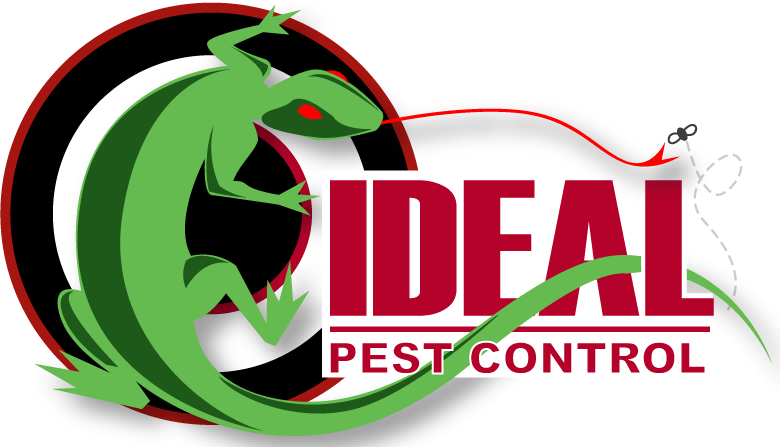Is It An Ant Or A Termite?
Key Differences Between Ants And Termites
At first glance, ants and termites can seem like near-identical nuisances. They’re small, live in colonies, show up in or around wood, and are a headache to homeowners and property managers alike. But beneath those surface-level similarities lies a world of differences—differences that matter a lot when it comes to how you handle the problem. Knowing whether you’re dealing with ants or termites is a big deal because the way you approach the situation changes depending on who the culprit is. And if you get it wrong? You might end up wasting time and money on the wrong solution while the real problem quietly gets worse.
So how do you tell them apart? It starts with a little bit of detective work—looking closely at their behavior, their appearance, and the kind of damage they leave behind.
Subtle Clues In Appearance
Most people don’t love the idea of staring closely at bugs, but in this case, it’s worth taking a look. Ants and termites each have defining features, and if you can get close enough (or snap a picture and zoom in), you’ll notice some telltale signs.
Termites have straight, beaded antennae, thick waists, and four wings that are roughly equal in size. Their bodies tend to be a bit soft-looking, and they come in creamy white or pale brown tones depending on the type. Flying termites, often called swarmers, show up during mating season and are a common first sign that there’s a colony somewhere nearby.
Ants, on the other hand, have bent or elbowed antennae, a pinched waist that creates a clearly segmented body, and two longer front wings paired with two slightly shorter back wings if they happen to be the flying variety. You’re more likely to see them in reddish or dark brown shades, and their movements can be a bit more erratic and fast-paced than termites.
It’s worth noting that winged versions of both insects usually show up when the colony is trying to expand—so if you’re spotting them indoors, it could mean there’s already a well-established nest somewhere in your structure.
Behavior And Habitat Clues
Beyond appearance, these insects have different ways of interacting with your space. Termites are quieter invaders. They work slowly and methodically, often hidden behind walls or under floors, eating their way through cellulose-based materials like wood, drywall, and even paper. They’re moisture-lovers, too, so they tend to gravitate toward places like basements, leaky windows, or around plumbing fixtures. The thing about termites is that they don’t venture out much—you usually won’t see them crawling around in the open unless it’s swarming season. Their destructive work is mostly hidden until it starts to show up as hollowed wood, blistered paint, or sagging floors.
Ants are much more in-your-face. When they’re inside, they’re often on the move, scouting out food or creating highways between their nest and whatever crumbs they’ve found. Carpenter ants, which can be mistaken for termites due to their love of wood, don’t actually eat it—they carve out galleries to live in. That means the damage they cause can look different: smoother tunnels and shredded wood fragments (called frass) scattered near entry points. You might hear light rustling behind walls with a large enough colony, or see them marching around your counters and baseboards in broad daylight.
Another big difference is how the colonies are structured. Termites have complex castes, including workers, soldiers, and reproductive swarmers, and the whole colony works together to tunnel and feed. Ant colonies tend to be more segmented and may split off and form satellite colonies, which can spread the problem even further if it’s not addressed quickly and thoroughly.
The Damage Tells A Story
If you haven’t seen the insects themselves but you’re noticing damage around your property, there are a few things that might give you a hint about what you’re dealing with. Termite damage tends to be hidden until it becomes extensive. Tapping on wooden beams or floors might produce a hollow sound. You might notice paint bubbling or wood that feels soft when you press into it. And in some cases, you’ll spot their mud tubes—small, pencil-thin pathways made of soil and wood particles that termites build to travel from the ground to their food source while staying protected from air and light.
Carpenter ants also damage wood, but their galleries tend to be smoother and more polished in appearance, almost like they were sanded down. You’re more likely to see actual wood debris near baseboards, window sills, or attics where they’ve been working. Their damage can still compromise structural integrity over time, but it usually takes longer than with termites.
One more clue? Timing. If you start to see flying insects indoors during spring or summer, take note of when and where you see them. Termite swarms are brief and typically happen in warm, humid weather, often following rain. Ant swarmers can appear around the same time, but they’re usually a little more drawn to light and tend to show up in more varied areas of the home.
Why It Matters
Mistaking one for the other can have some serious consequences. Termites are generally more destructive in the long term because they feed on wood 24/7 and can go undetected for a long time. If you treat a termite infestation like an ant problem—using surface sprays or bait traps meant for ants—you’re unlikely to reach the core of the colony, and the structural damage continues while you think it’s handled.
On the flip side, if you assume ants are termites and panic, you might end up investing in more extensive treatments than necessary. That’s not to say carpenter ants don’t deserve attention—they absolutely do—but the urgency and methods differ.
Knowing the difference also helps pest control professionals come in with the right strategy from the start. Ants might require baiting and sealing off entry points. Termites might call for soil treatments, monitoring stations, or even structural repairs depending on how long they’ve been active.
Even if you’re not sure what you’re seeing, gathering some basic clues—taking a photo, noting where they appeared, how many you saw, and whether there’s any visible damage—can go a long way in helping professionals identify the pest quickly and accurately.
When you're trying to figure out whether you're dealing with ants or termites, the smallest details can make a big difference. From how they look and behave to the type of damage they leave behind, each clue adds up to a clearer picture. And once you know what you're up against, you can tackle the issue with the right tools, the right timing, and the right strategy.
If you’re unsure about what you’ve found or you want to get ahead of a potential infestation, reach out to the team at Ideal Pest Control. With the experience and resources to handle both ant and termite problems thoroughly, they’ll help you reclaim your home or business before the damage spreads. Don’t wait for the signs to become impossible to ignore—contact us and take the first step towards a pest-free environment.


